We live in a digital age where online presentations and workshops have become the norm. Webinars have emerged as a crucial tool for businesses and educators, offering a platform for live online events.
The rise of virtual event technology has transformed the way we connect and learn. With the help of a reliable webinar hosting platform, organizers can create engaging and interactive experiences for their audience.
A smooth webinar registration process is essential for ensuring a high turnout. By understanding the basics of webinars, individuals can effectively leverage this powerful tool for their benefit.
Key Takeaways
- Webinars are live online presentations, workshops, or seminars.
- Virtual event technology has revolutionized online events.
- A reliable webinar hosting platform is crucial for success.
- A smooth webinar registration process ensures high turnout.
- Webinars offer a powerful tool for businesses and educators.
Understanding the Basics of Webinars
To effectively utilize webinars in your online marketing strategy, it’s crucial to start with a solid understanding of what they entail. We will explore the definition, purpose, different types, and the advantages of using webinars.
Definition and Purpose of Webinars
A webinar is essentially an online seminar that allows for the presentation, discussion, and interaction between the hosts and attendees in real-time or asynchronously. The primary purpose of webinars is to educate, inform, or train the audience on specific topics, products, or services. According to On24, webinars have evolved into a powerful tool for businesses to connect with their audience.
Webinars serve multiple purposes, including:
- Educating customers about new products or services
- Training sales teams or partners
- Conducting market research through Q&A sessions
- Establishing thought leadership in an industry
Different Types of Webinars
Webinars can be categorized into several types based on their purpose and format. The most common types include:
- Educational Webinars: Focus on teaching the audience a new skill or providing in-depth knowledge on a subject.
- Promotional Webinars: Used to promote products or services, often including demos or trials.
- Training Webinars: Designed to train participants on how to use a product, service, or software.
Advantages of Using Webinars
The advantages of webinars are numerous, making them an attractive option for businesses. Some of the key benefits include:
- Increased audience engagement through interactive features
- Cost-effectiveness by reducing the need for physical venues and travel
- Ability to reach a global audience without geographical constraints
As noted by a marketing expert, “Webinars offer a unique opportunity to engage with your audience in a more personal and interactive way, fostering a stronger connection and brand loyalty.”
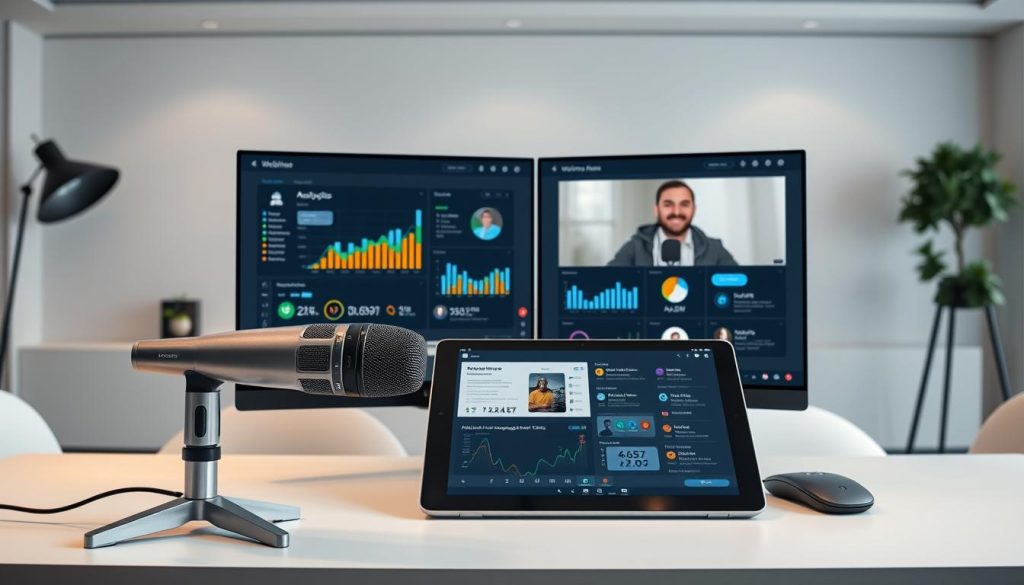
| Advantage | Description |
|---|---|
| Cost-Effectiveness | Reduces costs associated with venue rental, travel, and accommodation. |
| Global Reach | Allows businesses to reach a global audience without geographical limitations. |
| Interactive Engagement | Offers various interactive features to engage the audience effectively. |
By understanding the basics of webinars, businesses can better leverage these online events to achieve their marketing and educational goals.
Key Components of a Successful Webinar
A successful webinar hinges on several key components that work in harmony to deliver a seamless experience. We will explore these crucial elements to help you host a webinar that achieves your goals.
Platform Selection and Setup
Choosing the right webinar hosting platform is critical for the success of your online event. The platform you select should offer robust features such as screen sharing, Q&A sessions, and recording capabilities. We recommend evaluating different options based on your specific needs, such as the size of your audience and the level of interactivity you desire.
When setting up your webinar platform, ensure that the webinar registration process is straightforward and user-friendly. This includes creating a simple registration form and providing clear instructions on how to join the webinar. A smooth registration process can significantly impact your attendance rates.
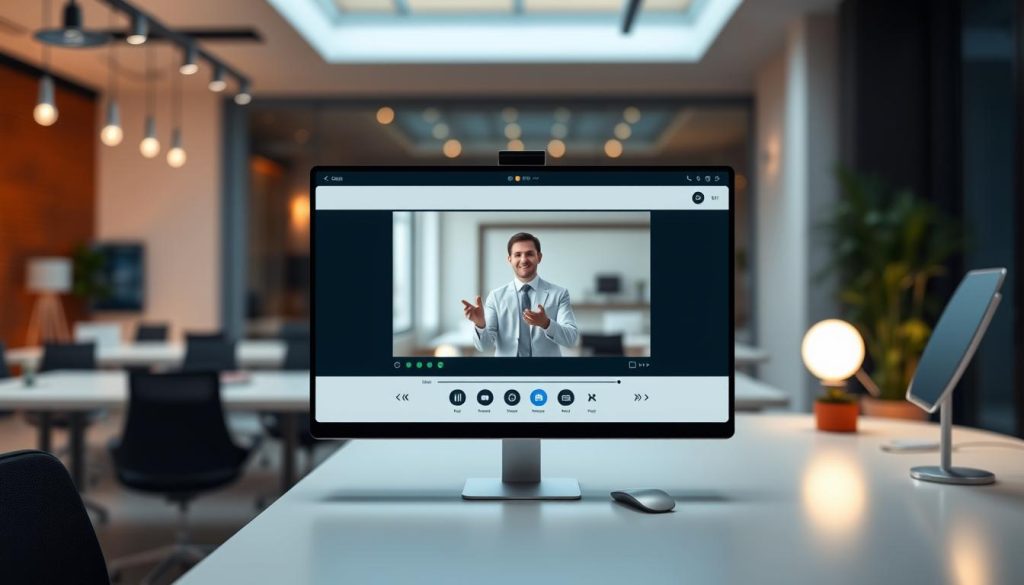
Equipment Requirements
The quality of your webinar is heavily influenced by the equipment you use. Investing in good quality audio and video equipment can make a significant difference in the overall experience. We suggest using a reliable webcam, microphone, and headphones to ensure clear communication.
Additionally, a stable internet connection is crucial to prevent disruptions during the webinar. We recommend conducting a thorough test of your equipment before the event to identify and resolve any potential issues.
Content Preparation and Planning
Content is king when it comes to webinars. Developing a compelling and informative presentation is essential to keeping your audience engaged. We advise focusing on creating content that is relevant, concise, and visually appealing.
Virtual event technology has advanced significantly, offering various tools to enhance your webinar content. Utilize features like polls, quizzes, and interactive Q&A sessions to make your webinar more engaging. Proper planning and preparation of your content will ensure that your webinar delivers value to your attendees.
By focusing on these key components, you can host a successful webinar that resonates with your audience and achieves your desired outcomes.
Engaging Your Audience During a Webinar
To make your webinar truly impactful, you need to captivate your audience from start to finish. Engaging your audience is crucial for the success of your webinar, as it directly influences the level of participation, feedback, and ultimately, the conversion rates.
Tips for Effective Presentation
Effective presentation is key to keeping your audience engaged. Here are some tips to enhance your presentation skills:
- Use Visually Appealing Slides: Incorporate high-quality images, clear charts, and concise bullet points to make your slides engaging.
- Maintain a Conversational Tone: Speak naturally and avoid reading from your slides verbatim.
- Incorporate Storytelling Elements: Use narratives to make your content more relatable and memorable.
Interactive Features to Use
Interactive features are essential for maintaining audience engagement. Some effective tools include:
- Live Polls: Use polls to gather feedback and encourage audience participation.
- Quizzes: Incorporate quizzes to make your webinar more engaging and fun.
- Live Chats: Utilize live chat features to allow attendees to ask questions and interact with each other.
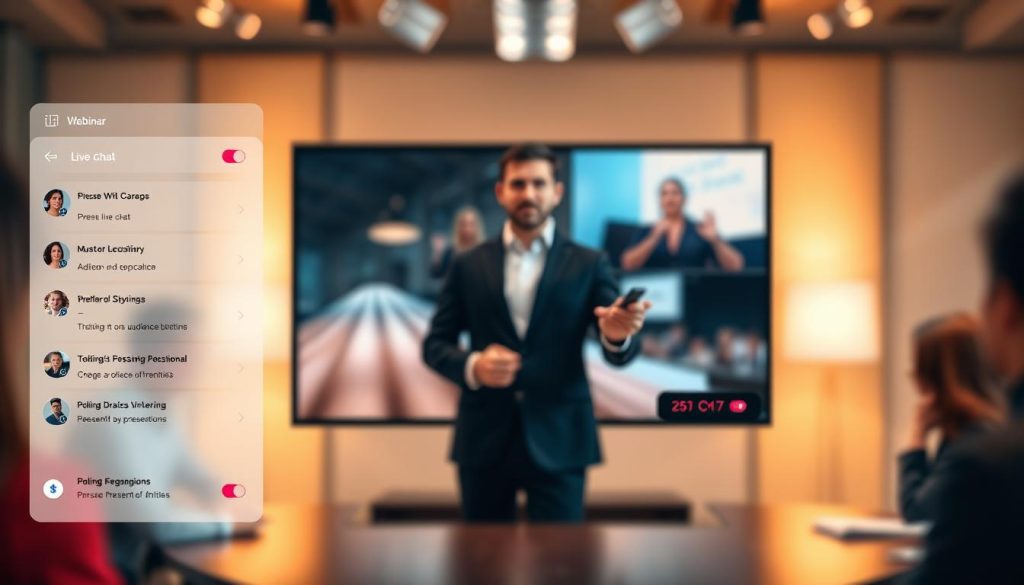
Q&A Sessions and Audience Interaction
Managing Q&A sessions effectively is vital for real-time interaction and feedback. Here are some strategies:
- Encourage Questions: Invite attendees to ask questions throughout the webinar.
- Use Moderators: Appoint moderators to help manage the Q&A session and ensure that questions are addressed.
- Provide Clear Answers: Ensure that your responses are concise and relevant to the topic.
Promoting Your Webinar Effectively
Webinar promotion is an art that requires a multi-faceted approach. To ensure your online seminar reaches its target audience, you need to leverage various marketing channels and strategies.
Utilizing Social Media Platforms
Social media is a powerful tool for promoting your webinar. We recommend using platforms like LinkedIn, Twitter, and Facebook to create buzz around your event. Create engaging content, such as teasers, behind-the-scenes insights, and speaker spotlights, to capture potential attendees’ attention.
- Share engaging content related to your webinar topic.
- Utilize relevant hashtags to increase visibility.
- Run targeted ads to reach your desired audience.
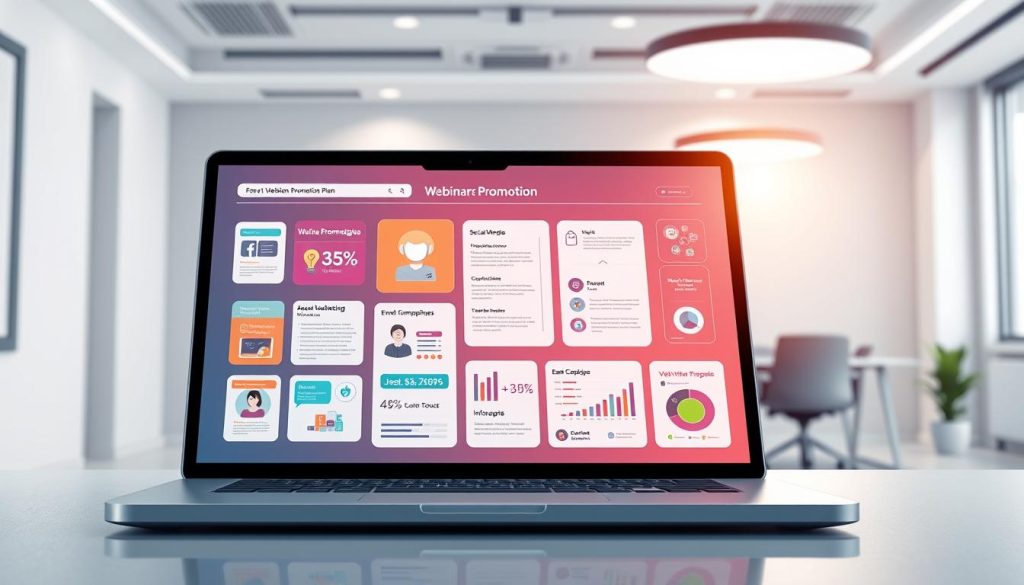
Email Marketing Strategies
Email marketing remains one of the most effective ways to promote your webinar. Craft compelling email campaigns that highlight the benefits of attending your webinar. Use personalization and segmentation to tailor your messages to different segments of your audience.
- Send out save-the-date notifications well in advance.
- Follow up with detailed information about the webinar.
- Send reminders as the event approaches.
Collaborating with Influencers
Partnering with influencers in your industry can significantly expand your webinar’s reach. Identify influencers who align with your topic and audience, and collaborate with them to promote your event. For more insights on content marketing strategies, visit Christoph Olivier Consulting.
- Identify relevant influencers in your niche.
- Propose mutually beneficial collaboration opportunities.
- Leverage their networks to promote your webinar.
Analyzing Webinar Metrics and Feedback
The key to enhancing your webinar’s effectiveness lies in carefully examining the metrics and feedback. By doing so, we can gain valuable insights into attendee behavior, preferences, and pain points, ultimately refining our strategy for future webinars.
Tools for Measuring Success
To measure the success of a webinar, we rely on various analytics tools that track attendance, engagement, and drop-off rates. These tools provide a comprehensive overview of how attendees interacted with the webinar content. Some of the key metrics we focus on include:
- Registration rates and actual attendance numbers
- Engagement metrics such as poll responses and Q&A participation
- Drop-off rates at different stages of the webinar
By analyzing these metrics, we can identify areas of strength and weakness in our webinar strategy. Effective use of webinar engagement tools is crucial for maintaining audience interest and participation.
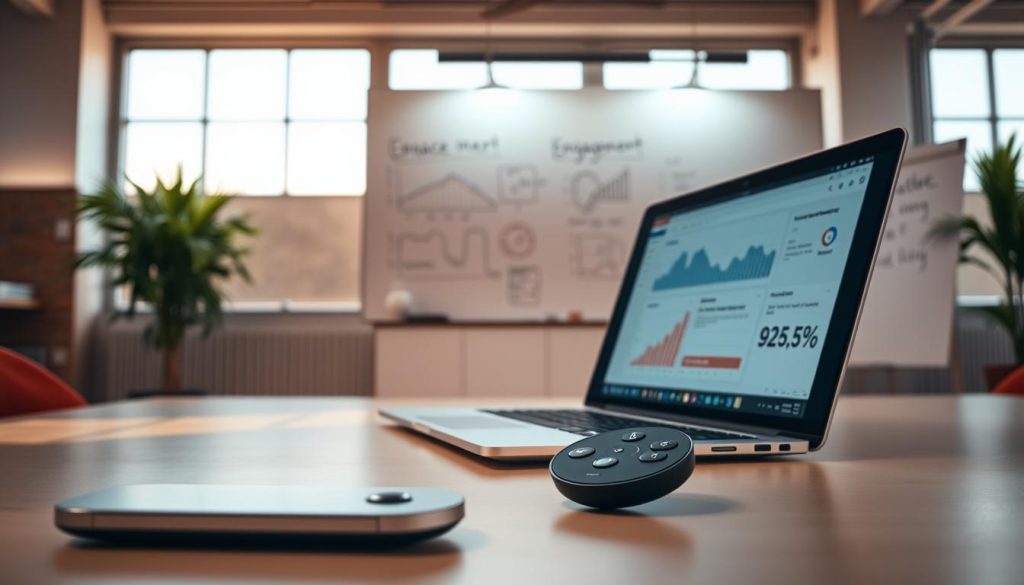
Interpreting Attendee Data
Interpreting attendee data is a critical step in understanding audience behavior and preferences. This involves analyzing the data collected from various sources, including registration forms, poll responses, and Q&A sessions. By doing so, we can:
- Identify trends and patterns in attendee behavior
- Understand what content resonated with the audience
- Pinpoint areas where attendees showed less engagement
This analysis enables us to make data-driven decisions to improve future webinars, tailoring our content and presentation style to better meet the needs and expectations of our audience. Understanding webinar audience interaction is vital for creating more engaging and effective webinars.
Continuous Improvement Strategies
Continuous improvement is at the heart of any successful webinar strategy. By regularly analyzing webinar metrics and feedback, we can refine our approach over time. Some strategies for continuous improvement include:
- Refining content based on attendee feedback and engagement metrics
- Experimenting with different presentation techniques and formats
- Enhancing webinar engagement tools and interactive features
By adopting a culture of continuous improvement, we can ensure that our webinars remain relevant, engaging, and effective in achieving their intended goals.
Common Challenges in Hosting Webinars
The road to a successful webinar is often fraught with technical and engagement issues. Hosting a webinar can be a complex task, requiring meticulous planning and execution to overcome the various challenges that arise.
Technical Difficulties and Solutions
One of the primary concerns when hosting a webinar is dealing with technical difficulties. These can range from connectivity issues to software glitches. To mitigate these risks, it’s crucial to select a reliable webinar hosting platform that offers robust support and has a proven track record of stability.
Having a backup plan in place is also essential. This could include having alternative internet sources, backup equipment, or even a secondary webinar platform. By being prepared for potential technical issues, you can minimize disruptions and ensure a smoother experience for your attendees.
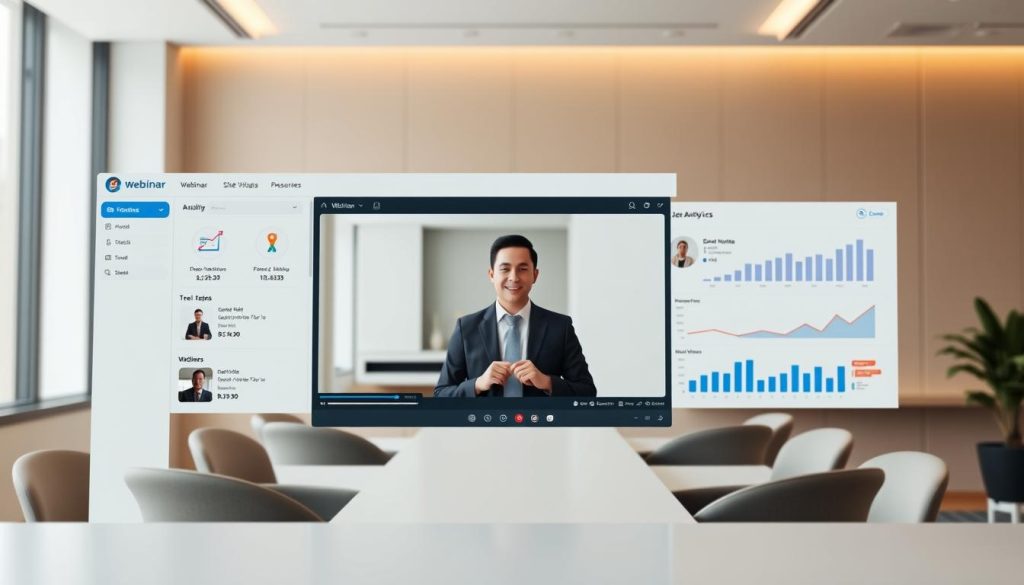
Keeping Attendees Engaged
Maintaining attendee engagement is another significant challenge. To keep your audience interested, incorporate interactive elements such as polls, Q&A sessions, and live chats. Varying your content and using a mix of presentation styles can also help in keeping the webinar engaging.
It’s also beneficial to encourage audience participation by asking questions and responding to comments. This not only keeps attendees engaged but also makes the webinar more interactive and enjoyable.
Follow-Up Issues
After the webinar, following up with attendees is crucial for maximizing the event’s impact. This can involve sending post-webinar surveys to gather feedback and providing additional resources to attendees. By doing so, you can continue the conversation started during the webinar and build a stronger connection with your audience.
Effective follow-up can also help in identifying areas for improvement for future webinars, allowing you to refine your strategy and enhance the overall quality of your virtual events.
Best Practices for Webinar Follow-Up
A strategic follow-up after a webinar can significantly enhance its overall success by fostering continued engagement and improving future events. The follow-up process is a critical component of a webinar’s lifecycle, allowing organizers to build on the momentum generated during the live event.
Sending Thank-You Emails
Sending thank-you emails to attendees is a fundamental step in the follow-up process. These emails not only express gratitude but also provide an opportunity to offer additional resources, such as supplementary materials or next steps, that can further engage the audience. When crafting thank-you emails, consider the following elements:
- A personalized greeting addressing the attendee by name
- A brief summary of the webinar’s key takeaways
- Links to any promised resources or recordings
- A call-to-action (CTA) encouraging further engagement or registration for future events
Sharing Webinar Recordings
Sharing webinar recordings is another effective follow-up strategy that can extend the reach of the webinar content. By making recordings available, organizers can cater to those who missed the live event and allow attendees to revisit the material. To maximize the impact of shared recordings, consider:
- Uploading the recording to a popular video-sharing platform
- Embedding the recording on the company website or a dedicated webinar page
- Promoting the recording through social media channels and email newsletters
- Utilizing webinar engagement tools to track views and analyze audience interaction with the recording
Gathering Feedback for Future Events
Gathering feedback from attendees is crucial for understanding what worked well during the webinar and identifying areas for improvement. This feedback can be invaluable in refining future webinar strategies and enhancing webinar audience interaction. To gather meaningful feedback, consider:
- Distributing a post-webinar survey to attendees, asking about their experience and suggestions for improvement
- Analyzing metrics from the webinar, such as attendance duration and engagement metrics, to identify trends and patterns
- Encouraging open-ended feedback through email or direct communication channels
By implementing these best practices for webinar follow-up, organizers can maximize the value of their webinars, foster a more engaged audience, and continually improve the quality of their events.
Case Studies: Successful Webinar Strategies
By looking at real-life examples of successful webinars, we can distill the essence of effective webinar promotion strategies and online seminar logistics. These case studies offer a wealth of information on what works and what doesn’t in the world of webinars.
Industry-Specific Examples
Different industries have unique challenges and opportunities when it comes to webinars. Let’s examine a few examples:
- Healthcare Industry: A leading medical device manufacturer used webinars to launch a new product, resulting in a 30% increase in pre-orders.
- Financial Services: A fintech company hosted a webinar on investment strategies, attracting over 1,000 registrants and generating significant leads.
- Technology Sector: A software company used webinars to provide training on their product, reducing customer support queries by 25%.
These examples demonstrate the versatility of webinars across various industries and their potential for achieving specific business objectives.
Lessons Learned from Top Performers
Analyzing successful webinars reveals common factors that contribute to their effectiveness. Here are some key takeaways:
| Strategy | Impact | Example |
|---|---|---|
| Engaging Content | Increased attendee engagement | Interactive Q&A sessions |
| Effective Promotion | Higher registration numbers | Social media campaigns |
| Follow-up Communications | Improved lead generation | Targeted email campaigns |
By understanding and applying these strategies, businesses can significantly enhance the success of their webinars.
Future Trends in Webinar Technology
Webinar technology is on the cusp of a new era, with advancements in virtual event technology and webinar hosting platforms set to redefine the industry. As businesses continue to seek innovative ways to connect with their audiences, the demand for more sophisticated and interactive webinar solutions is on the rise.
Innovations Shaping the Webinar Space
The webinar landscape is being reshaped by several key innovations. One of the most significant is the integration of virtual reality (VR) and augmented reality (AR) into webinar platforms, allowing for more immersive experiences. Additionally, advancements in live streaming technology are enabling higher quality video and audio, reducing latency, and improving overall user experience.
Another trend is the growing importance of personalization in webinars. Future webinar platforms are expected to leverage data analytics and AI to offer more tailored experiences, enabling hosts to customize content, pacing, and interaction based on attendee preferences and behaviors.
The Role of Artificial Intelligence
Artificial intelligence (AI) is set to play a pivotal role in the future of webinars. AI can automate routine tasks such as registration processing, follow-up emails, and data analysis, freeing up organizers to focus on content and engagement. Moreover, AI-powered tools can enhance the attendee experience by providing real-time translation services, personalized content recommendations, and predictive analytics to improve future webinars.
AI-driven chatbots are also becoming increasingly sophisticated, capable of handling complex attendee inquiries and providing support during the webinar, thus enhancing the overall attendee experience.
Predictions for Webinar Usage in Business
As webinar technology continues to evolve, we predict that businesses will increasingly rely on webinars as a critical component of their marketing and communication strategies. The ability to host large-scale, interactive webinars with global reach will become more accessible, enabling businesses to expand their audience and influence.
Furthermore, the integration of webinar data with other business intelligence tools will provide deeper insights into customer behavior and preferences, allowing businesses to refine their strategies and improve ROI.
In conclusion, the future of webinar technology holds much promise, with innovations in virtual event technology, AI, and personalization set to transform the industry. By staying ahead of these trends, businesses can maximize their webinar impact and achieve their strategic goals.
Conclusion: Maximizing Your Webinar Impact
As we conclude our comprehensive guide on how webinars work, it’s clear that leveraging the right tools and strategies is crucial for online marketing success. By understanding the webinar registration process and implementing effective live online presentation tips, you can significantly enhance your online presence and engagement.
Key Takeaways and Next Steps
We’ve covered the essential components of a successful webinar, from platform selection to follow-up strategies. To maximize your webinar impact, focus on creating engaging content, utilizing interactive features, and analyzing attendee data to inform future events.
Putting Webinar Strategies into Action
To get started, define your webinar goals and target audience, then choose a suitable platform and equipment. Practice your live online presentation tips to ensure a smooth delivery. By applying these insights and strategies, you can achieve your business objectives and drive growth.
We encourage you to take the first step in leveraging webinar technology to enhance your online presence and engagement. With the right approach, webinars can become a powerful tool in your marketing arsenal, driving results and growth for your business.
